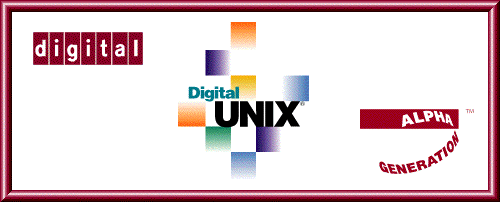

© Digital Equipment Corporation 1996
All Rights Reserved.
This manual explains how to use tools to debug a kernel and analyze a crash dump of the Digital UNIX operating system. Also, this manual explains how to write extensions to the kernel debugging tools.
The following are trademarks of Digital Equipment Corporation: ALL-IN-1, Alpha AXP, AlphaGeneration, AXP, Bookreader, CDA, DDIS, DEC, DEC Ada, DEC Fortran, DEC FUSE, DECnet, DECstation, DECsystem, DECterm, DECUS, DECwindows, DTIF, MASSBUS, MicroVAX, MSCP, OpenVMS, POLYCENTER, Q-bus, TMSCP, TURBOchannel, TruCluster, ULTRIX, ULTRIX Mail Connection, ULTRIX Worksystem Software, UNIBUS, VAX, VAXstation, VMS, XUI, and the Digital logo.
NFS is a registered trademark of Sun Microsystems, Inc. Open Software Foundation, OSF, OSF/1, OSF/Motif, and Motif are trademarks of the Open Software Foundation, Inc. UNIX is a registered trademark in the United States and other countries, licensed exclusively through X/Open Company, Ltd.
Restricted Rights: Use, duplication, or disclosure by the U.S. Government is subject to restrictions as set forth in subparagraph (c) (1) (ii).
Digital Equipment Corporation makes no representations that the use of its products in the manner described in this publication will not infringe on existing or future patent rights, nor do the descriptions contained in this publication imply the granting of licenses to make, use, or sell equipment or software in accordance with the description.
Possession, use, or copying of the software described in this publication is authorized only pursuant to a valid written license from Digital or an authorized sublicensor.
Digital conducts its business in a manner that conserves the environment and protects the safety and health of its employees, customers, and the community.
About This Manual
This manual provides information on the tools used to debug a kernel
and analyze a crash dump file of the Digital UNIX operating system. It also
explains how to write extensions to the kernel debugging tools. You can use
extensions to display customized information from kernel data structures or
a crash dump file.
Audience
This manual is intended for system programmers who write programs that
use kernel data structures and are built into the kernel. It is also intended
for system administrators who are responsible for managing the operating system.
System programmers and administrators should have in-depth knowledge of operating
system concepts, commands, and utilities.
New and Changed Features
The following list describes changes that have been made to this manual
for Digital UNIX Version 4.0 or higher:
Organization
This manual consists of five chapters and one appendix:
| Chapter 1 | Introduces the concepts of kernel debugging and crash dump analysis. |
| Chapter 2 | Describes the tools used to debug kernels and analyze crash dump files. |
| Chapter 3 | Describes how to write a kdbx debugger extension. This chapter assumes you have purchased and installed a Digital UNIX Source Kit and so have access to source files. |
| Chapter 4 | Describes the crash dump file creation process and explains how to manage crash dump files on your system. |
| Chapter 5 | Provides background information useful for and examples of analyzing crash dump files. |
| Appendix A | Contains example output from the crashdc utility. |
The printed version of the Digital UNIX documentation set is color
coded to help specific
audiences quickly find the books that meet their needs. (You can order
the printed documentation from Digital.) This color
coding is reinforced with the use of an icon on the spines of books.
The following list describes this convention:
Related Documents
For additional information, refer to the following manuals:
| Audience | Icon | Color Code |
|---|---|---|
| General users | G | Blue |
| System and network administrators | S | Red |
| Programmers | P | Purple |
| Device driver writers | D | Orange |
| Reference page users | R | Green |
Some books in the documentation set help meet the needs of several audiences. For example, the information in some system books is also used by programmers. Keep this in mind when searching for information on specific topics.
The Documentation Overview, Glossary, and Master Index provides information on all of the books in the Digital UNIX documentation set.
You can send your comments in the following ways:
A Reader's Comment form is located on line in the following location:
Please include the following information along with your comments:
The Digital UNIX Publications group cannot respond to system problems or
technical support inquiries. Please address technical questions to your
local system vendor or to the appropriate Digital technical support office.
Information provided with the software media explains how to send problem
reports to Digital.
Reader's Comments
Digital welcomes any comments and suggestions you have on this and other
Digital UNIX manuals.
/usr/doc/readers_comment.txt
Digital Equipment Corporation
UEG Publications Manager
ZK03-3/Y32
110 Spit Brook Road
Nashua, NH 03062-9987
A Reader's Comment form is located in the back of each printed manual.
The form is postage paid if you mail it in the United States.
Conventions
The following conventions are used in this manual:
.
.
.cat(1)cat(1)
indicates that you can find information on the cat
command in Section 1 of the reference pages.